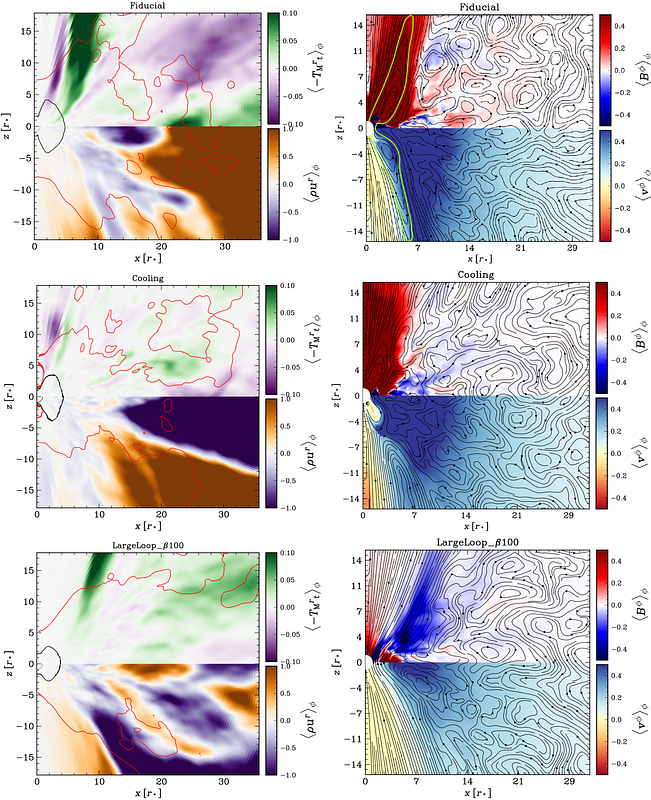Magnetized Accretion onto Neutron Stars: from Photon-trapped to Neutrino-cooled Flows

Magnetized Accretion onto Neutron Stars: from Photon-trapped to Neutrino-cooled Flows
Luciano Combi, Christopher Thompson, Daniel M. Siegel, Alexander Philippov, B. Ripperda
AbstractWhen a neutron star (NS) intercepts gas from a non-degenerate star, e.g., in a tidal disruption event, a common-envelope phase, or the collapsing core of a massive star, photons become trapped in the hot flow around the NS. This gas forms a radiatively inefficient accretion flow (RIAF) until the density and temperature close to the NS surface grow large enough for binding energy to be converted to neutrinos. Here we present three-dimensional, general-relativistic, magnetohydrodynamic simulations of accretion onto a non-rotating, unmagnetized NS. These connect, for the first time, an extended accretion disk with a self-consistent hydrostatic atmosphere around the star. The impact of different seed magnetic fields and accretion rates is studied by approximating the radiation-pressure dominated flow as an ideal gas with an adiabatic index of $4/3$, coupled to a variable neutrino emissivity. At low accretion rates, the hydrostatic atmosphere shows slow rotation and weak magnetization, transitioning to an outer RIAF structure. A toroidal magnetic field mediates the inward flow of energy and angular momentum through the atmosphere, which reaches a steady state when neutrino emission balances the accretion power. We develop a one-dimensional analytical model connecting these results with more general initial conditions and describing the main features of the flow. Our results have implications for the spin and mass evolution of hypercritically accreting NSs.